The zombie we see in films, comics, and video games today is a far cry from the zombie we would have seen fifty or a hundred years ago. That’s because the zombie, like many other monsters, is a product of it’s time. Just as Bram Stoker would have trouble recognizing the vampires from Twilight, so to would the early believers in the walking dead struggle with the way we have re-conceptualized the zombie over the decades. The fears the zombie embodies tend to match those our society is experiencing, and as society’s fears change, so to does the monster that represents them. Discounting ancient myths and legends similar to the zombie (the Viking dragur, for instance), the modern zombie has gone through three distinct evolutionary phases in it’s short history.

Phase I: The Voodoo Zombie:
The original iteration of the zombies can be traced via the Caribbean Islands to West Africa. Like those who invented the monster, this zombie was brought to the new world against its will on slave ships, where they spread throughout the Caribbean Islands and south-eastern United States. The traditional voodoo zombie is raised from the dead by a bokor (a voodoo sorcerer). The zombie becomes an undead slave to the bokor, mindlessly doing his bidding until the zombie is returned to the grave.

Unlike later zombies, voodoo zombies are not naturally aggressive. Instead of attacking the living, zombies of this era were typically used as slave labor, performing manual labor or doing dangerous jobs. They weren’t dangerous because of the threat they posed to the living, they were scary because, if you weren’t careful, you too could become a mindless zombie, forever living in servitude to the bokor.
Of course the bokor could always order his zombies to kill, and did so frequently in old zombie stories. This is likely where the later notion of violent zombies savagely attacking the living probably got its start. Although even when the bokor sent his zombies to kill, that was all they did. They did not devour the body of the victim.
Examples of the Voodoo Zombie era include the Bela Lugosi classic, White Zombie, as well as other such as King of the Zombies, I Walked with a Zombie, and The Serpent and the Rainbow (both the film and the book).
To kill a voodoo zombie, one must get them to eat salt. Alternatively, killing the bokor would release the zombies from their servitude, which might be easier than tricking them into eating salt.
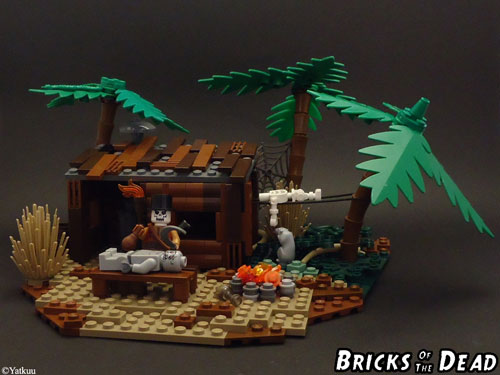
The voodoo zombie was prominent in a time where xenophobia and racism was much more accepted, so a monster of African origins tied to a mysterious, poorly understood religion is a natural fit for the time and place.
Interestingly,the book The Serpent and the Rainbow took an in-depth look at the zombies in Haiti, examining the mythology and the possible cause. It concluded that the voodoo zombie was not actually dead. Through a mixture of poison from the puffer fish and several other potent drugs, the bokor was actually enslaving the living, keeping them in a constant state of drugged stupor. Of course, several scientists have called these conclusions into question.
Phase II: The Romero Zombie:
The next big change in the history of the zombie came from an unusual source: vampires. More specifically, the 1954 vampire novel I Am Legend by Richard Matheson. Unlike traditional vampire, the bloodsuckers in I Am Legend are caused by some sort of plague, and attack the living en masse. The last non-vampire is holed up in his home, free to travel during the day, but under siege every night, struggling not only with the monsters outside, but with the overwhelming boredom and loneliness that comes with being the last man on earth.
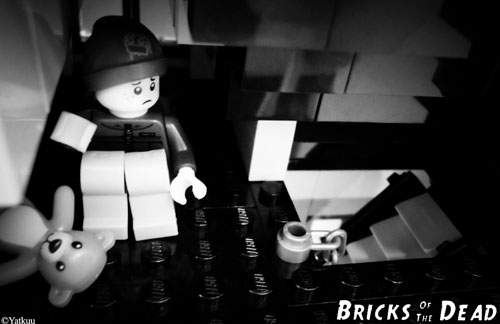
In 1968 a young filmmaker named George A Romero read the book, and set out to make an unofficial adaptation. The result was Night of the Living Dead, a simple black and white film that would go on to become a cult hit and define the zombie of its generation, as well as setting up most of the rules for future zombie films, books, games, and comics.
While he abandoned the intelligent vampires from Matheson’s book and any sort of concrete genesis for the outbreak (there are mentions of space radiation, but it’s never positioned as a definitive cause) he kept a lot of the other important elements that have come to define the genre: embattled survivors under siege, the government being unable to stem the tide of the undead, internal struggle with the survivors (although Romero substitutes intra-group conflict for Matheson’s more existential issues). While Night of the Living Dead ends with a seeming triumph for humanity, future sequels become more and more dire, as we see complete chaos in Dawn of the Dead, and a total breakdown of civilization, with survivors scraping by in underground bunkers in Day of the Dead.

Night of the Living Dead also set the trend of having zombie movies make some sort of political statement, although the film did so quite unintentionally. While it boasted an ensemble cast, Ben stands out as one of the most rational of the group, and a natural leader to boot (although he makes some pretty serious mistakes along the way). Coincidentally, Ben is played by a black man (Duane Jones), but this is not due to Romero wanting to make a statement about race. Jones was simply the best actor available, so he got the meatiest part.
Accidental or not, audiences saw Night of the Living Dead as a horror film that had something to say, and when Romero decided to make a sequel, he wasn’t shy about laying on the social commentary. This set the trend for zombies standing in for everything from wanton consumerism to communism that continues to this day.
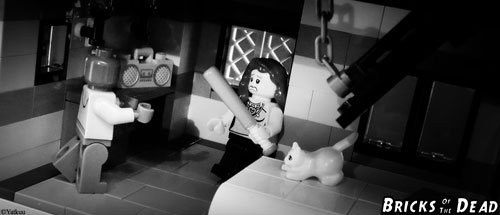
The zombies of Night of the Living Dead bear precious little resemblance to their voodoo brethren. While both are clumsy, shambling reanimated corpses, the similarities more or less end there. Romero’s zombies are no passive slaves, and they act on no one’s authority. They are driven by one simple need: the need to feast on the flesh of the living. They also multiply with terrifying ease, for any recently dead reanimate as blood-thirsty zombies, including those killed by other zombies.
And don’t even think about trying to get these zombies to eat salt. If you want to take out a Romero-zombie, you need to destroy its brain. “You’ve got to shoot ’em in the head,” became the by-law for survival in the Romero era, although any trauma to the brain is enough to put down these undead shamblers for good.
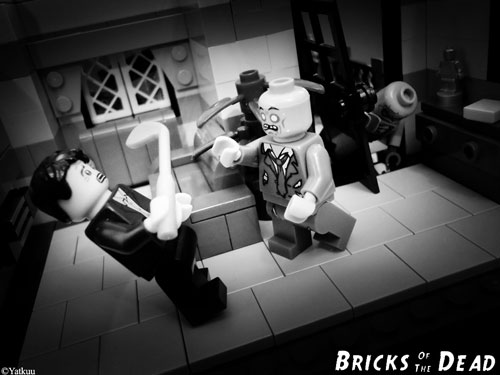
Of course zombies aren’t the only threat. Other survivors, some malicious and some simply misguided, are much more dangerous than the walking dead.
Romero-style continue to be popular today, and include such examples as Dawn of the Dead, Day of the Dead, The Walking Dead (both the comic and the television series), World War Z, and Shaun of the Dead.
The comedy Return of the Living Dead (whence comes the idea that zombies eat brains, and not just flesh), actually discusses Night of the Living Dead on screen. It states that the film was based on a true story, but got a lot of the details wrong. This was due to the fact that both films shared the same original writer: John Russo. Of course Return of the Living Dead was rewritten to be a black comedy rather than a horror film.
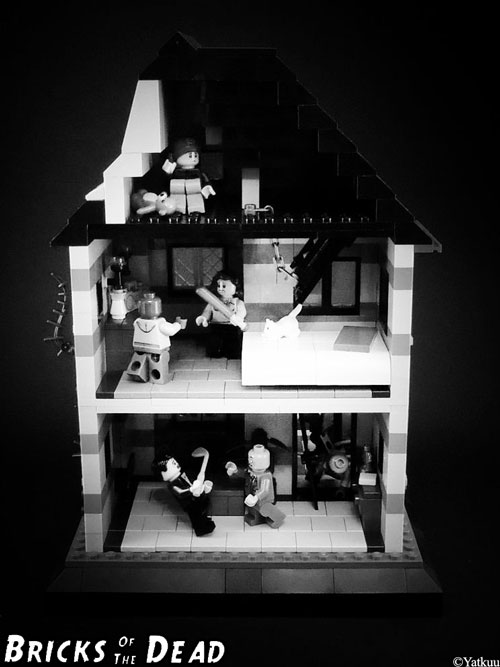
Phase III: The Infected Human:
At the turn of the millennium, zombie movies had stagnated somewhat. Audiences were no longer thrilled to see zombies slowly shambling around, and were looking for a more believable monster; voodoo and space radiation no longer cut muster with increasingly savvy consumers.
In 2002, a small horror film set in London started getting a lot of attention. Directed by visionary Danny Boyle, the film was equally well known for being shot entirely on digital than for its revitalization of the zombie genre. But revitalize the genre it did.
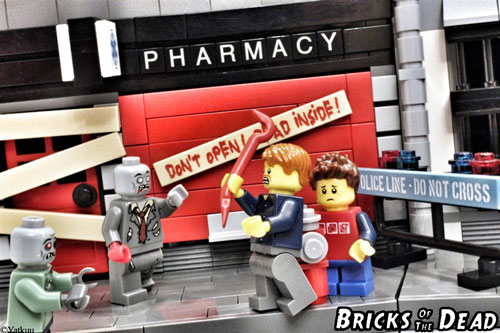
Boyle kept a lot of what made zombie films of Romero’s generation so distinct: society has broken down, survivors are on their own in slowly emptying cities, other humans might be more dangerous than the zombies, etc. But he made significant changes to the monster itself. Boyle’s zombie was no longer a reanimated corpse, it was a living person infected with a virulent disease that combined the worst symptoms from rabies, Ebola, and a half-dozen other awful afflictions. It was called Rage, and spread almost instantly with nothing but a minor fluid exchange between parties; even a single drop of blood in an open wound or soft tissue would mean infection.
On the other hand, Boyle’s monsters didn’t require any special means to kill them. Since they were infected human beings, anything that would kill a person would also kill a rage zombie.
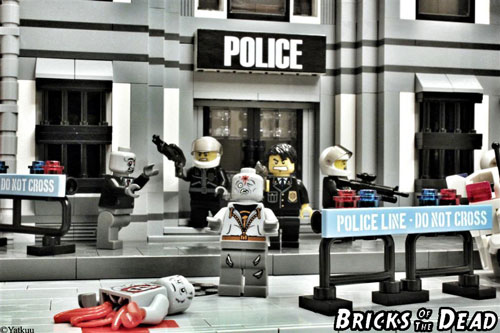
With SARS, Avian Flu, and dozens of other potential pandemics causing a constant low-grade panic, 28 Days Later tapped into the zeitgeist like nothing else. The fact that it was a taut, well acted, well shot thriller didn’t hurt.
After 28 Days Later, zombie fans were split. There were those that loved the new breed of fast zombies, and “purists” who hated the idea of a zombie that could move with any sort of coordination. In fact, there still exists a passionate argument among zombie fans to this day about whether the Rage zombies can even be considered zombies, since they are not undead.
28 Days Later was an incredible influential film, and soon enough other zombie movies were using the same formula, although more than a few tried to marry it to the classic Romero zombies we’ve all come to love and fear. In the 2004 remake of Dawn of the Dead, the zombies are undead like in Romero-styled films, but just as fast as the 28 Days Later Rage zombies. Many writers of zombie fiction were inspired by this, and tried to find a happy medium whereby newly risen zombies were faster and more coordinated, but as they decayed they became more akin to the shambling horde of Night of the Living Dead.
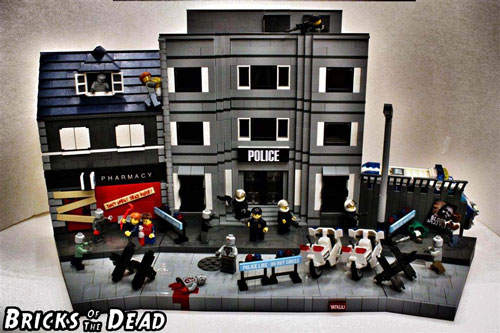
Examples of the new breed of zombies include Zombieland, 28 Weeks Later, and Left 4 Dead.
What’s Next For Zombies?
The zombie is currently experiencing an unprecedented level of popularity, and shows up in nearly every aspect of our popular culture. We treat the zombie as both a monster to be feared and a shared cultural joke, oscillating between the two with reckless abandon. From political satire to survival horror games, themed cupcakes to disaster preparation, cute stuffed animals to gory horror films, the zombie is seemingly inescapable these days. While this is probably not what we originally had in mind, it’s hard to argue with the fact that we are now living among the walking dead.
A special thank you goes out to Greg (AKA Yatkuu) for the phenomenal LEGO® illustrations accompanying this piece.
Yes! I get another soda from my brother!
That’s why I do all this work.
Yea, my webcomic’s take a lot of work when it comes to the baseplates, i dont have a real one, so i make my own out of scrap 4×6 baseplates and small 2x baseplates to conect them. its a pain in the ass!
Baseplates are pretty cheap. Well worth the minor investment.
I dont get any allowence, in our religion, we pay 10% to help pay for our churches, teples, and other things.
Awesome piece Dave, and I love your conclusion. We are now living among the walking dead, that’s so true! I have a few colleagues who are certified zombies.
Thank you sir! I have some similar colleagues.
Best article on the site.
Thank you Eternal Enigma!
hey eternal enigma are u new here?
Nice article Dave, very informative for your younger fans (letting them know there was ‘un-life’ before 28 days)
Hats off to Greg for his awesome builds, they set the article off perfectly!
Were they built in conjunction with your writing or did Greg have them in storage awaiting their chance in the spotlight 🙂
Thanks, Dex!
We worked on it together, although Greg got his stuff done way before me (because I’m an awful procrastinator).
Not to nitpick but I found a typo – “…the government being unable to stem the tied of the undead…”
Cool article. I might be biased but I feel like it the undead from Dungeons and Dragons (and the slew of media descended from it) deserved a distinct mention, since they’re sort of a fusion between phases I and II and predate phase III by a few decades.
No problem with nitpicking typos; I’ve got it fixed now.
I didn’t really address games so much here for two reasons: 1. I’m not terrible familiar with then, and 2. The gaming mechanic seems to force changes on the monsters to make them work within the medium, and I almost think that’s a subject for another write-up altogether.
hey, how come ive never seen gold, verson boy until now?
Ive got this crazy theory about the current surge of zombie popularity in popular culture. And as everyone knows, the fun part about having a crazy theory is posting it on the internet, so here goes. I think zombies are surging in popularity in response to the recent vampire hype, particularly the whole “Twilight” mess. In the same way that the punk rock movement of the early 80s followed the perfect glitz and glitter of disco and that the grunge movement of the early 90s followed the big-hair and neon pop culture of the late 80s. Now pop-culture has recoiled from the sappy, beautiful, emotionally complex and conflicted vampire trend to the shambling, decomposing, “I don’t have any emotional conflicts, I just wanna eat your frigging brain” zombie. Its just my little crackpot theory, but if its anything close to right, then its an interesting piece of social commentary.
It seems like a pretty reasonable theory to me, and I like your tying it into the punk rock response to glam.
I think it’s entirely possible that this is a contributing factor to the popularity of zombies over the last decade. I’d also say that there’s a general interest in horror and apocalypticism of late.
LOVE IT! Fantastic feel on these.
Thank you kindly!
Great stuff lego chap. You’re missing some fulci zombie goodness though!
If memory serves, Fulci zombies are most Romero zombies with some voodoo flavor, but it’s been a while since I’ve seen Zombi or any of the sequels.
This is absolutely brilliant, combining two of my favorite things. Although there are fast zombies as early as 1980’s Nightmare City and 1985’s Return of the Living Dead (which you list…and even the Cemetery Ghoul in Romero’s Night jogs along at a fast clip in the opening of the film before slowing down for the remainder), you are absolutely on target in that 28 Days Later definitely popularized that as a new trend. It’s a wonderful article with fantastic LEGO work!
Arnold T. Blumberg
Co-Author, ZOMBIEMANIA: 80 MOVIES TO DIE FOR
(and the forthcoming ZOMBIEMANIA RISES: 100 MOVIES TO DIE FOR (revised edition))
Thanks Arnold.
There were indeed fast zombies prior to 28 Days Later, but they didn’t set a trend, so to speak.
ZOMBIES IN SPACE!!!!
It’s the next logical step.
Whedon zombies.
And they were terrifying.
I thought that the next thing was already here, Mutant zombies, like Tanks, Witches, and Boomers
Those seem to exist purely in games, which makes things complicated. Things happen in games for a lot of reasons: fun, balance, challenge, etc. Not necessarily because that’s how the culture is changing, or because they reflect certain fears, etc.
Dave Rapp also brings up zombies in games, which I might have to research for a follow-up article at some point.
how about this link, i love it http://www.youtube.com/watch?v=4_Xz9aJ9yGY
oh wait, you did say something about L4D at the top
Yeah, I did.
Well so much for that then
Very nice article! It was entertaining and educational! Zombies could be used as a teaching method now! Ghastly!
Thanks!
yeah, $30 bucks for a zombie class lession!
http://www.youtube.com/watch?v=M1uVi41I1oc&feature=related This has like 80,000,000 veiws, you cant miss a zombie thing like that.
make that 18,000,000
Fantastic article and great Mocs by Yaktuu! Thanks for sharing. Growing up watching these films means this was a real nostalgia trip! 🙂 watching the early Romero stuff on VHS as a small child was harrowing!
Thanks Hamerstein!
i think that theres a phase 3 turning or of course human who was bit
agreed! (2 years later lol)